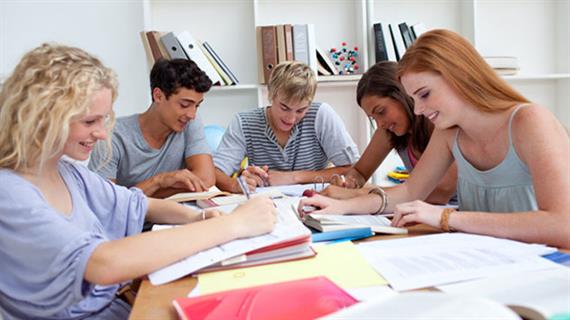We love the idea of a flipped classroom—in theory. But all of the theoretical talk we’ve heard has been just that…theoretical. How does a flipped classroom actually work? And how are teachers putting words into action to help their students learn? We interviewed two flipped teachers to find out. Here’s what James, a 10th-grade science teacher in Oklahoma, and Michelle, an 11th-grade English teacher in Washington, had to say:
What’s the first step in planning a flipped lesson?
James: Before you can flip your classroom, you have to find or make content that your students can easily access at home that teaches the required material. So, if you’re teaching about motion, for example, you either need to find a video or audio lecture on motion or you need to make one. I usually look at Khan Academy for videos or I use the Explain Everything app to make my own. I’ve also had some luck using Google to search for podcasts by college professors on certain topics.
What types of materials do you send home for “lectures”?
Michelle: I think the flipped model generally assumes you’re sending home a podcast or a video. But there are many modalities that teachers can use to teach. I’ve sent home everything from a video to a magazine article to instructions to go to a certain website and explore. The point is that your students are getting initial exposure to a concept at home before coming to school so that class time can be spent focusing on reinforcement.
How do you know that your students are comprehending the material if the entire “lecture” takes place at home?
Michelle: I’m not sure how well a flipped classroom would work with younger or less-motivated students, but my students are juniors in high school and are also college-bound so I know that they will spend time with the material at home to make sure they understand it. That said, I always make sure that a large part of the in-class activities we do involves some sort of a check for comprehension, whether it’s a mini-quiz or a small group discussion.
What types of in-class activities do you do to supplement the take-home lecture?
James: I almost exclusively use the flipped classroom model on topics that require lab work. That way, I can utilize precious class time in the science lab doing hands-on projects and experiments. I typically send the students home with a lecture the night before a lab, then do a quick check for comprehension of the subject matter before sending them back into the lab to assess whatever concept that they learned.
Michelle: Since I’m an English teacher, I typically send home lectures that cover technical literary or writing concepts (like plot or sequence) and then use class time to host writing labs where I’m available to coach students on their writing skills. I’ve also used the flipped classroom model in order to facilitate classroom discussions. I’ve sent students home with a commentary on a piece of literature that we read in class and then had them use the commentary to prepare for a deep classroom discussion the next day.
What if the concept is too hard for the students to understand at home on their own without additional support?
James: I have actually purposefully used the flipped classroom model several times with the concepts that generally give my students the most trouble. I’ll do a short in-class lecture one day, then send them home with a podcast or video the next and then reconvene for a culminating activity. That way, students get the benefit of hearing about a difficult concept both from me and from someone else.
What advice do you have for a teacher wanting to try flipping their classroom?
James: My advice is that they should just try it once. This isn’t something you have to do every day or buy into completely, but simply something you can do in certain instances to better teach your students. There are still days that I lecture in class. And there are days that flipping isn’t the right solution. But there are other days when I know my students will best learn using this model. There is a lot of flexibility in teaching, and this is one of the ways you can use your expertise to help your students learn.
